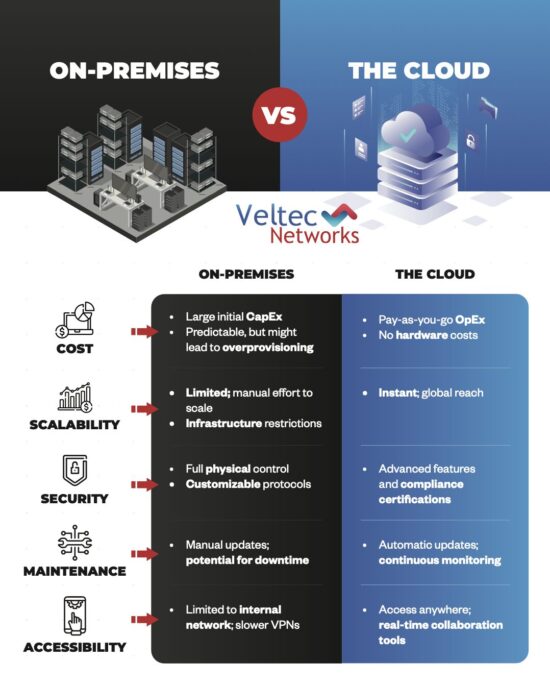 Cloud computing is becoming a popular trend for businesses looking to increase agility and lower costs. There are three categories of cloud computing:
Cloud computing is becoming a popular trend for businesses looking to increase agility and lower costs. There are three categories of cloud computing:
- Software as a Service (SaaS)
Software as a Service is a software distribution model in which applications are hosted and managed by the service provider and end users access the applications over a network. This service model allows end users to collaborate easier because all users have the same version of the software.
- Platform as a Service (PaaS)
Platform as a Service allows you to manage your applications and data while the cloud provider manages everything else. This service model enables you to run applications without the hassle of maintaining the hardware and software infrastructure.
- Infrastructure as a Service (IaaS)
Infrastructure as a Service is the foundation of cloud computing. The cloud provider manages your servers, storage, networking, and virtualization. This service model allows you to avoid expenditure on hardware and human capital.
Cloud computing is fairly unique compared to conventional computing. Cloud computing services are:
- Accessible over the Internet on any device.
- Built on a massively scalable infrastructure
- Purchased by amount of consumption (pay per use).
- Based on flexible and configurable resources.
Advantages and Disadvantages
As a business owner, the decision to move to the cloud should be made after reviewing the advantages and disadvantages. Here are some of the advantages:
- Cost Efficiency
Cloud computing is one of the most cost efficient methods to use, maintain, and upgrade. There are pay-as-you-go, one-time payment, and other scalable options available.
- Backup and Recovery
The cloud offers an ease way to store, backup, and restore data. The entire process of backup and recovery is much simpler compared to traditional methods of data storage.
- Automatic Software Integration
Software integration typically occurs automatically in the cloud. Cloud computing also allows you to customize your options in a simple manner.
- Accessibility
The cloud allows you to access information from any location or device, as long as there’s an Internet connection.
- Quick Deployment
Cloud computing gives you the advantage of quick deployment. Your entire system can be functional in a matter of minutes.
Here are some of the disadvantages:
- Technical Issues
Technology is always prone to technical issues and outages. If network and connectivity problems occur, it can be difficult to access information.
- Security
The cloud provider holds all of your company’s sensitive information, which could potentially put your company at risk if you’ve chosen an unreliable or unsecure cloud service.
- Cyber-attacks
The Internet will never be completely secure. There’s always the possibility of external hack attacks and sensitive data theft.
Internal vs. External Clouds
Internal and external clouds are based on where the computing resources reside. An internal cloud is located in the enterprise data center and assets are owned by the enterprise, whereas an external cloud is located at a service provider’s data center.
As a business owner, it’s important to consider the confidentiality of information in an external cloud. Not all applications are suitable for external clouds, including applications that provide a competitive advantage or sensitive information.
Many organizations use an internal cloud as a bridge to the external cloud, developing applications to support standards of both internal and external clouds to migrate to an external cloud when necessary.
To learn more about cloud computing, give us a call at (408) 849-4441 or send us an email at info@veltecnetworks.com. Veltec Networks can help you develop an enterprise cloud strategy and minimize the risks associated with the cloud.






